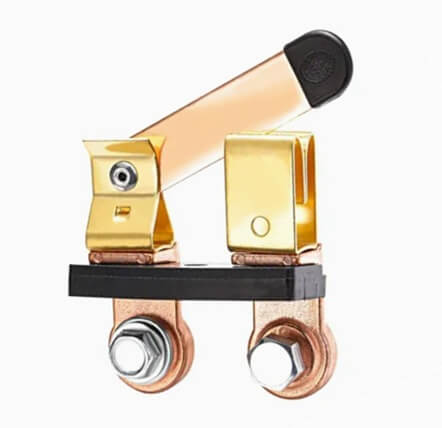My 1976 Corvette
Battery Disconnect Switch
Fortunately, my 1976 Corvette has no electrical issues, and the battery doesn’t drain even after sitting for extended periods. Nevertheless, I decided to install a battery disconnect switch to completely cut power from the battery to the car’s electrical system. I chose to do this because my car is parked in a carport attached to my house, and with 50-year-old automotive wiring, there’s always a risk of unpredictable electrical faults. I wanted to eliminate the possibility of an electrical fire in the car spreading to my home.

Why a Disconnect Switch Matters for Safety
The wiring in a C3 Corvette, now half a century old, can degrade over time due to factors like insulation wear, corrosion, or exposure to heat and moisture. These issues can lead to electrical shorts or, in rare cases, fires. A battery disconnect switch mitigates this risk by completely isolating the electrical system when the car is not in use, providing peace of mind, especially for owners like me who park near their homes. This simple upgrade significantly reduces the chance of an electrical fault escalating into a serious fire hazard.
I don’t use a newer radio that would lose its settings, and I have no need for an anti-theft alarm in my area. If you rely on those features, a battery disconnect switch may not be the ideal solution for you.
Choosing the Right Disconnect Switch
I researched various options for battery disconnect switches available on the market, including key-operated electrical switches, rotary switches, and lever-style switches. I wanted a simple solution and wasn’t interested in overly complex designs, so I narrowed my choice down to a rotary switch or a lever-style switch. Ultimately, I opted for the lever-style switch because it’s visually clear whether the power is on or off and is easier to operate. I also read comments from other Corvette owners about rotary switches occasionally causing intermittent power loss due to vibrations, which further swayed my decision toward the lever model. I purchased a lever-style switch online for about $6, with similar options typically ranging from $4 to $7 depending on the brand and where you happen to buy it. These products usually look very similar and most likely all come from the same factories in China.

Installation Process
Installing the disconnect switch was straightforward and quick. The only hiccup was that the bolt included with the switch was too short, so I had to source a slightly longer one to properly secure it to the battery. The installation was done with the battery in its original location behind the driver’s seat, despite the somewhat tight space. The process didn’t require any modifications, and I completed it with basic tools in about 10 minutes, (No hardware store visit included). :)
Using the Disconnect Switch
Operating the switch is incredibly easy. I can toggle it from the driver’s seat without needing to fold the seat forward, which means it adds no extra hassle when starting or shutting off the car. The lever’s clear on/off position gives me peace of mind, knowing the electrical system is completely isolated when the car is parked.
Share Your C3 Knowledge
Have insights to share? We welcome your expert feedback, technical discussions, and Corvette-related stories. Your contributions help keep this Corvette community thriving! Join the conversation below.
Other articles
General
- Corvette C3 years
- Corvette Specs, Colors, etc. by year:
1968 1969 1970 1971 1972 1973 1974 1975 1976 1977 1978 1979 1980 1981 1982 - Is the Corvette C3 always a Stingray?
- Corvette C3 charts
- Corvette C3 books
- Mako Shark II
- Corvette L88
- Greenwood Corvettes
- Reader's Wheels: Corvette 1968
- Corvette C3 Buyer's Checklist
